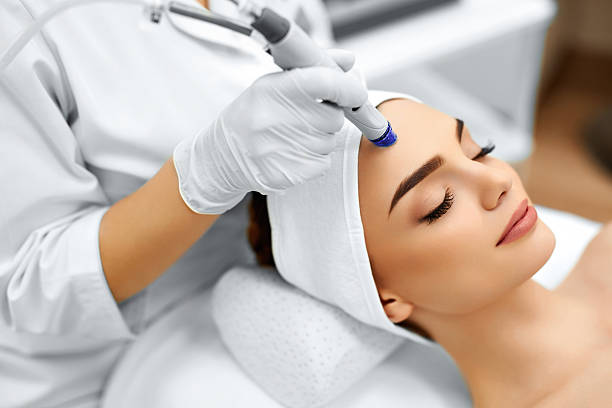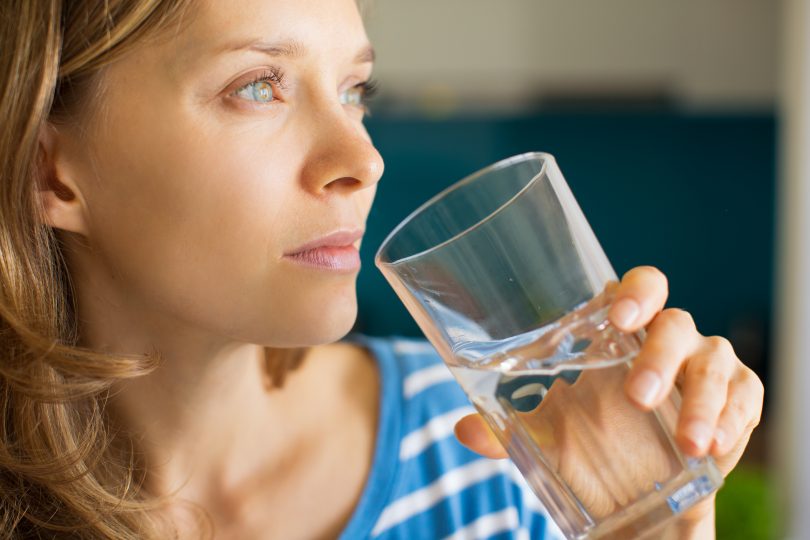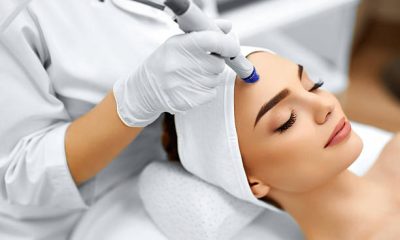Health
The Most Effective Tips that Will Keep Your Day Fresh and Healthy

It’s only mid-morning and you are already tired and ready for a nap. Sound familiar? Most people feel exhausted when they wake up.
Scientific studies have shown that chronic fatigue is a common symptom of most health issues. If you’ve been struggling with tired mornings, long afternoon naps, and low energy all day long, this article will help you.
Self-control and productivity
This doesn’t mean that you should spend your entire morning working. You have to do the right things to make your self-control and energy last longer. Today, we are going to share with you a few effective practical tips that will help you break negative habits and keep your day fresh and healthy. Let’s get started!
1. Plan your day
As the popular saying goes, failing to plan is planning to fail. You should never start your day without an organized plan. The best time to plan your day is the night before or immediately after getting out of bed. Planning your day will save you a lot of energy and time. By planning your day and following the plan, your day will be a success. When most of your days are a success, you cannot fail in life.
So, how do you plan your day? Write down all the tasks or activities that you want to complete. Next, organize them in order of priority. Organizing your plan in order of priority helps you spend most of your time on high-priority activities which tend to pay off in spades in the long run.
2. Rise before the sun
Once you have a concrete plan in place, the next step is to follow the plan. When and how you wake up greatly determine how productive you’ll be. When the alarm goes off, wake up immediately. Don’t hit the snooze button.
If you have formed the habit of hitting the snooze button, place your alarm clock or phone away from your bed before going to bed. Getting up early will allow you to ease into the day with no hurries. You can practice yoga, exercise, read the newspaper, or whatever makes you happy.
3. Limit caffeine
While caffeinated drinks such as coffee boost your energy, they can make you feel tired when the effects wear off. Caffeine is a stimulant that has short-term effects which can lead to dependency. As your body develops tolerance, you will crave more caffeine to experience the boost.
Caffeine has been linked to stress, headaches, high blood pressure, and difficulty in falling asleep at night. Consider switching coffee with passion fruit tea or smoothie. This will not only boost your energy but also improve your health, said Lisa O. from Mimy Online.
4. Exercise
While some prefer exercising in the evening, morning workouts have lots of benefits. They include:
- Fewer distractions – Exercising in the morning means you’re less likely to be distracted by messages, phone calls, and emails. Since nobody will be minding your business, you are likely to exercise consistently.
- More energy – Let’s face it. It’s difficult to exercise in the evening. After working hard all day long, the only things that will be on your mind are your favorite sitcom and your bed. Exercising in the morning makes it easier for you to follow your program. Plus, it boosts energy and reduces fatigue, making you feel energized all day long.
- Weight management – According to a small study published in 2015 by EBioMedicine, morning workouts are ideal for losing weight. In the study, participants exercised in the morning and evening over separate sessions. They found that fat burn was at its peak when participants exercised before breakfast. If you want to manage your weight, morning exercise is ideal for you.
5. Avoid screens till breakfast
The majority of people are addicted to their phones. If you are one of them, you likely start using your phone immediately after waking up. While it may seem harmless, diving straight into texts, emails, and social media platforms wastes your time and makes it easier for you to succumb to other peoples’ wants.
It’s important to take the first few minutes or hours of your day to do something that relaxes your body and mind. Meditating, reading, or watching the birds are all great ways to start your day.
6. Clean your workspace
A disorganized workspace is distracting and time-consuming. Remember, your productivity and performance are greatly determined by your ability to concentrate. A disorganized workspace will make it harder for you to focus and achieve your goals.
The best time to clean your workspace is the evening before. After working and completing your tasks for the day, take a few extra minutes to arrange your workspace before leaving. If you have lots of books and papers, consider decluttering.
You can store all your paperwork on an external flash drive or the Cloud. You can avoid spending a lot of time organizing your workspace by simply putting back things after use.
7. Learn to say no
Learning to say no will protect your mornings and allow you to fulfill your commitments successfully while your mind is active. People who say yes to everything are more likely to experience stress and depression. Learn to say no and you’ll have all the time to do what matters to you.
8. Avoid multitasking
Multitasking is a myth that drains energy and hurts productivity. Research studies have shown that the human brain cannot focus on two things at the same time. Therefore, when you multitask, you are simply switching tasks. Since you cannot focus on two or multiple tasks at any one time, you end up doing all the tasks in an average way.
To achieve our goals, we have to do all our tasks in a great way. And you can do this by simply focusing on one task to its completion. You can now see the importance of planning your day before you start working.
Plus, they are slower at switching tasks. Multitasking reduces performance and efficiency because your brain cannot focus on two or more tasks simultaneously.
9. Drink water first
Drinking water immediately after waking up spikes your physical and mental energy levels. Water is a source of natural and steady energy that lasts all day long by improving the absorption of nutrients in the stomach. You need to drink it on an empty stomach for it to be fully absorbed. You should wait for fifteen to thirty minutes after drinking water to eat your breakfast. This is the perfect time to exercise.
10. Sleep
You cannot stay fresh and energetic all day long if you don’t get a good night’s sleep. Medical professionals recommend seven to nine hours of sleep every night for adults. Sleep is a basic need just like food and water.If you have problems sleeping at night, here are a few tips:
- Stick to a sleep schedule – Going to bed and waking up at the same time every day is important for your body and mind. Your mind needs routine to operate at an optimum level. Remember, your body and mind can’t tell the difference between a workday and a weekend.
- Avoid screens – Computer, phone, and tablet screens emit blue light. Blue light reduces the production of melatonin, a hormone that tells your brain and body that it’s time to go to bed. Avoid screens at least thirty minutes before going to bed. You can use this time to plan your day, meditate, or read a good book.
- Create a conducive environment – The bedroom environment greatly determines the quality of sleep. Factors such as noise, lights, temperature, and room arrangement can cause poor sleep and other health issues. Try to minimize light and external noise. Ensure that your bedroom clean, quiet, and peaceful.
- Avoid eating late – Eating late at night can negatively affect sleep quality and the natural release of melatonin. Studies have shown that eating three to four hours before bed helps people fall asleep easily.
Conclusion
Creating a morning routine and sticking with it every day is the key to a successful life. Be intentional about your morning hours and understand that they should be handled carefully.
Health
Discover Youthful Skin: Your Guide to Top Aesthetic Treatments


Welcome to our clinic, one of the best aesthetic treatment providers. Our team of experts offers special procedures to help our clients with younger-looking skin. If you want to get smooth skin or simply refresh your skin, then we are here for you. Nowadays, there is a surge in the demand for aesthetic treatments, and people are loving them. The prime reason for this surge is they provide ways to boost natural beauty without surgery. Here in this article, we will have a discussion related to this topic. We will discuss how treatments like dermal fillers and Botox work. We will also discuss the benefits these treatments offer.
Exploring Botox and Dermal Fillers
First, let’s meet your Botox doctor. Botox is a special treatment that helps relax muscles on the face that cause wrinkles. It’s like giving your face a mini-vacation so it looks smoother and fresher. The doctor who gives you Botox is very skilled and makes sure the treatment is safe and works well.
Next, we’ll talk about dermal fillers. These are like magic gels that doctors inject under the skin to fill out areas that may have lost volume, like cheeks or lips. Dermal fillers can help you look more youthful by bringing back the fullness to your face that sometimes goes away as we get older. The clinic chooses only the best fillers to ensure everyone gets a natural and beautiful result.
Both Botox and dermal fillers are quick ways to beautify your face without any surgery. Plus, the results can make you feel more confident about your appearance. So, if you’re looking to reduce wrinkles or give your face a little extra plumpness, these treatments could be perfect for you!
Advanced Skin Treatments
Let’s start with Sculptra injections. Sculptra is a special kind of filler, but it works differently from the ones we talked about before. Instead of just filling in spaces, Sculptra helps your skin make more of its own collagen over time. Collagen is what keeps our skin firm and youthful. These injections slowly improve the skin’s appearance, making it look naturally plump and smooth as weeks go by.
Now, let’s explore microneedling. This treatment involves a tool that gently pricks the skin with very tiny needles. These little pricks are so small you can hardly see them, but they do a big job. They help the skin heal itself and grow new, fresh layers. Microneedling treatment is great for reducing scars, wrinkles, and making the skin’s texture better. Plus, it helps your skin soak up any creams or serums you use, making them work better.
Both of these treatments are safe when done by professionals and can significantly improve how your skin looks and feels. If you’re looking for ways to rejuvenate your skin and make it glow, Sculptra and microneedling might be just what you need!
Facial Rejuvenation Techniques
First, let’s talk about the Hydrafacial treatment. This wonderful treatment deeply cleans and hydrates your skin. Imagine giving your face a refreshing drink of water that cleans out pores and leaves you glowing. The Hydrafacial is especially great because it suits all skin types and targets issues like dryness, acne, and wrinkles.
Next, we look at photofacial treatments. These use a special kind of light to brighten your skin and reduce spots or redness. It’s like shining a gentle, healing light that helps clear and soothe your skin. Photofacials are fantastic for tackling sun damage or uneven skin tones, making your skin look clearer and more even.
Both Hydrafacial and photofacial treatments are quick and gentle, making them perfect for a quick skin refresh without downtime. Whether you need deep hydration or want to even out your skin tone, these treatments offer great solutions. They are done by skilled professionals who make sure you get the best care and leave the clinic feeling happier about your skin.
Exfoliation and Skin Clarity
Let’s start with microdermabrasion, a super helpful treatment for refreshing your skin. Imagine using a magic eraser that gently scrubs away old skin cells to reveal fresh, new skin underneath. Microdermabrasion is just like that; it uses a special tool that carefully removes the top layer of skin, helping to reduce scars, dullness, and fine lines. It’s like giving your face a new beginning!
This treatment is perfect for those who want to brighten their complexion and achieve a smooth texture. It’s gentle enough for most people and works wonders by making your skin look fresh and vibrant. Whether you have some scars you’re not fond of or you just want your skin to glow, microdermabrasion can be a great choice.
Overall, both techniques discussed in this section are aimed at improving your skin’s appearance in a gentle yet effective way. If you’re considering a skin refresh, these options might be just what you need to help your skin look its best. Each treatment is carried out by caring professionals who ensure you feel comfortable and get great results.
Choosing the Right Treatment for You
When thinking about aesthetic treatments, it’s important to talk to skincare experts. These professionals can guide you based on what your skin needs and what you hope to achieve. For instance, if you want to reduce wrinkles, treatments like Botox might be suggested. However, if hydration is your goal, something like a Hydrafacial could be the answer.
Before deciding, consider factors like your skin type and any specific skin issues you want to address. Different treatments work best on different kinds of skin, so understanding your own can help a lot. Also, think about how long you want the results to last. Some treatments have effects that are more temporary, while others can last a long time.
Lastly, always make sure you are comfortable with the clinic and the professionals treating you. Feeling confident in their care is key to a good experience. By considering all these points, you can make a well-informed decision that lets you enjoy the best possible results from your chosen treatment. This way, you can look forward to seeing a happier, more confident you in the mirror!
Summing Up
Aesthetic treatments like Botox, dermal fillers, and facials offer wonderful ways to refresh and rejuvenate your skin. Each treatment has its unique benefits, whether it’s reducing wrinkles, hydrating the skin, or improving texture. By choosing the right treatment for your needs, you can achieve a natural, glowing look that boosts your confidence. Remember, it’s always important to consult with experienced professionals to ensure you receive the best care. So, take the step towards a more vibrant appearance, and enjoy the feeling of looking your best every day!
Health
The Hidden Dangers of Dehydration: How It Affects Your Body


Dehydration is more than just feeling thirsty; it can significantly impact your body and its functions. Staying hydrated often takes a backseat with summer heat waves, strenuous activities, and busy schedules. Understanding how dehydration affects your body and discovering effective solutions, such as IV therapy, can make a world of difference in maintaining your health and well-being.
The Effects of Dehydration on the Body
Water is essential for nearly every function your body performs. When you don’t consume enough fluids, your body begins to experience a range of adverse effects. Here are some of the key ways dehydration impacts your body:
Reduced Cognitive Function: Dehydration can impair brain function, affecting concentration, memory, and mood. Even mild dehydration can cause headaches, dizziness, and fatigue, making it hard to focus on tasks.
Physical Performance: Dehydration can significantly hinder physical performance for athletes or those who engage in regular exercise. When the body lacks sufficient water, muscle cramps, decreased endurance, and a higher risk of heat-related illnesses are expected.
Digestive Issues: Water aids in digestion by helping break down food and absorb nutrients. Dehydration can cause constipation and other digestive discomforts, as your body struggles to process food without adequate hydration.
Kidney Function: Your kidneys rely on water to filter waste from the blood and produce urine. Chronic dehydration can lead to kidney stones and even kidney damage over time.
Skin Health: Your skin is the largest organ and needs water to maintain its elasticity and suppleness. Dehydrated skin can appear dry, flaky, and more prone to wrinkles.
Cardiovascular Health: Dehydration reduces blood volume, making it harder for your heart to pump blood efficiently. This can lead to increased heart rate and low blood pressure, potentially causing serious complications.
Combatting Dehydration with IV Therapy
While drinking water is the most straightforward way to stay hydrated, there are times when our bodies need a more immediate solution. IV therapy offers a fast and efficient method to rehydrate and replenish essential nutrients.
What is IV Therapy?
Intravenous (IV) therapy directly infuses fluids, vitamins, and minerals into the bloodstream. This method allows for 100% absorption of these vital substances, bypassing the digestive system and providing immediate hydration and relief.
Benefits of IV Therapy for Dehydration
Rapid Rehydration
IV therapy from IV Minnesota delivers fluids directly into the bloodstream, allowing for quick and efficient rehydration. This is especially beneficial for severely dehydrated individuals or those unable to consume enough fluids orally.
Electrolyte Balance
Dehydration often leads to an imbalance of electrolytes like sodium, potassium, and magnesium, which are crucial for various bodily functions. IV therapy can include these electrolytes, helping restore balance and prevent complications such as muscle cramps and irregular heartbeats.
Enhanced Nutrient Absorption
IV therapy can include vitamins and minerals that boost your immune system, improve energy levels, and support overall health. This is particularly useful for individuals with nutrient deficiencies or those recovering from illness.
Improved Recovery
Athletes and fitness enthusiasts often use IV therapy to speed up recovery after intense workouts. Combining fluids and nutrients helps reduce inflammation, muscle soreness, and fatigue, promoting quicker recovery times.
Convenience and Customization
IV therapy sessions are typically quick, lasting 30 to 60 minutes. Treatments can be customized to address specific needs, such as hydration, energy boost, or immune support.
Conclusion
Dehydration can profoundly impact your health, affecting everything from cognitive function to skin health. Recognizing dehydration’s signs and its effects is crucial for maintaining your well-being. While drinking water remains essential, IV therapy is a powerful tool for combating dehydration, providing rapid rehydration and other health benefits. Whether you’re recovering from a strenuous workout, an illness, or simply looking to boost your overall health, IV therapy can be an effective and convenient solution. Stay hydrated, stay healthy, and consider the benefits of IV therapy as part of your wellness routine.
Health
Benefits of Maintaining Healthy Testosterone Levels


Testosterone is a hormone that is naturally produced by the body. It’s responsible for many important functions in both men and women, including sexual development, muscle mass, bone density, fertility, and much more.
But when testosterone levels drop below the recommended range for men—which can occur due to age or medical conditions—it can lead to some serious health issues.
Testosterone hormone is essential for the development of male reproductive tissues. It also plays an important role in regulating other functions of the body such as muscle mass, bone density, and sex drive.
If a man’s testosterone levels are too low, it can lead to various health issues. There are many effective testosterone supplements over the counter that help boost testosterone production in the body.
In this article, we will discuss how healthy testosterone levels can improve your life.
Read on to learn about the benefits of maintaining healthy testosterone levels.
Benefits of Healthy Testosterone Levels
Healthier testosterone levels provide numerous benefits for men including improved mood regulation, increased sex drive, and increased muscle mass.
However, it is important for men to consult with their doctors before taking any supplements or making drastic lifestyle changes related to increasing their testosterone levels as these measures could potentially result in adverse side effects if not undertaken correctly under proper medical supervision.
Additionally, healthy lifestyle choices such as regular exercise and eating well-balanced meals can help maintain optimal testosterone levels without any additional supplementation being required!
All these steps together should ensure that you reap all the benefits associated with having healthy testosterone levels!
Physical Benefits
One of the most well-known benefits to optimizing testosterone levels is increased physical performance. Studies have shown that boosting testosterone can increase muscle mass, lean body mass, strength, power, endurance and aerobic capacity. This makes it a great option for athletes who are looking to improve their performance in the gym or on the field. It can also be beneficial for those looking to reduce body fat percentage.
Testosterone hormone has impact on almost all body function including voice frequency and voice pitch. Studies report hat testosterone may also lower your voice.
Increased testosterone has also been linked to reductions in fatigue and an increase in energy levels.
Mental Benefits
In addition to physical performance gains, there are mental benefits associated with increasing your testosterone levels as well. Studies have suggested that higher testosterone levels correlate with improved cognitive function including better memory recall and improved learning abilities.
Additionally, higher testosterone can give you a greater sense of confidence which may result in improved social interactions as well as reduced stress level.
Muscle Mass and Bone Density
Testosterone helps build muscle mass and strength. When it drops below the normal range, it can lead to decreased muscle mass and even weakness in some cases. Low testosterone levels are also associated with an increased risk of osteoporosis or weakened bones due to decreased bone density.
Testosterone plays an important role in muscle growth as it helps build muscle mass by stimulating protein synthesis within the body’s cells. Men who have higher levels of testosterone tend to have greater muscle mass than those with lower levels of the hormone due to its effects on protein synthesis.
Not only does this help them look better but also improves their performance during physical activities like sports or workouts at the gym.
Mood Regulation
Low testosterone levels can cause depression, anxiety, and irritability in men. Studies have shown that men who have higher testosterone levels tend to be more relaxed and confident. This can lead to increased productivity at work and better relationships with family and friends.
Additionally, when men are more relaxed, they are able to focus on their tasks with greater clarity and be more productive throughout the day.
Low testosterone levels have been associated with depression, low libido, fatigue, and irritability in both men and women. Studies have shown that increasing testosterone levels can help improve mood and brain productivity significantly in those who experience these symptoms as a result of low testosterone levels.
Improved Sex Drive
A healthy level of testosterone helps improve a man’s libido or sex drive. When testosterone levels are low, men may experience a decrease in sexual desire or interest which can lead to issues in relationships with their partners or even depression if left untreated.
Studies have found that when men increase their testosterone levels through supplementation or lifestyle changes such as exercise and dieting, they often report an increase in libido which leads to improved sexual performance.
Healthy Weight Management
Finally, increasing testosterone can be beneficial for healthy weight management as well as sexual health concerns such as erectile dysfunction or low libido.
Higher estrogen is associated with increased fat storage around your waistline; so by optimizing your hormone balance (including estrogen) you may be able to reduce stubborn belly fat more easily than relying on diet and exercise alone.
Improved Libido and Fertility
In men, low testosterone levels can lead to infertility due to decreased sperm production. In women, it can cause irregular menstrual cycles or other hormonal imbalances that may interfere with conception or carry risks during pregnancy. Increasing testosterone levels has been shown to improve fertility rates in both sexes.
Low libido is one of the most common symptoms of low testosterone levels in both men and women. Increasing testosterone levels has been shown to increase libido significantly in those who are experiencing this symptom as a result of their low hormone levels.
Conclusion
Healthy testosterone levels are important for maintaining good overall health for both males and females alike. It plays an important role in sexual development, muscle mass, bone density, fertility rates, libido, and even moods!
If you think your hormone level might be lower than normal for your age or gender group, speak with your doctor about potential treatments that could help restore them back into the normal range! Maintaining healthy testosterone levels is just one step towards achieving better overall health!
Improving your hormone balance can lead to a host of positive effects—both physical and mental—and optimizing your testosterone is no exception!
From physical performance improvements like more strength and less fatigue to mental clarity gains like improved cognition and increased confidence—healthy levels of testosterone have something for everyone!
For those looking for weight loss assistance or sexual health improvements you’ll likely find some relief through proper hormone balancing as well!
The best way to know if boosting your testosterone will provide any benefit is by talking with a medical professional about having your hormone levels checked today!
-



 Biography6 years ago
Biography6 years agoJacqulyn Elizabeth Hanley is the Mother of Liza Soberano?
-



 Home5 years ago
Home5 years agoEpson L3110 Driver Free Download Latest Updated Version
-



 Games3 years ago
Games3 years agoBest Free To Play MMORPG To Try This 2021
-



 Biography5 years ago
Biography5 years agoAmanda Levy Mckeehan Biography, Family, Net Worth, Age, Affairs, Facts
-



 Biography5 years ago
Biography5 years agoWho is Rose Dorothy Dauriac? Scarlett Johansson Daughter?
-



 Biography5 years ago
Biography5 years agoJessica Ditzel Secret Information that Nobody Knows | Joe Rogan’s Wife
-



 Biography6 years ago
Biography6 years agoWhat is the relation of Nathaniel Larry Osorno with Liza Soberano?
-



 Anime5 years ago
Anime5 years agoOne Piece Filler | The Complete Guide and Updated List 2020































